Reimagining Saint Elizabeth’s home care experience for older adults
Summer 2018
Challenge
Home Care in Ontario is causing stress and frustration to frontline staff and clients alike. This system needs a new strategy in order to adapt to increasing demand without compromising quality of care.
Outcome
Saint Elizabeth, a Canadian home care provider, partnered with Bridgeable to tackle this problem with a service design approach. Through primary research, stakeholder workshops, and iterative prototyping, we developed Rhythm: A New Service Strategy. This comprehensive solution consists of three components: the Care Ambassador (a new role responsible for client on-boarding), the Client Portrait (an updated tool for collecting and maintaining client info), and Enhanced Scheduling (an app interface and process that reimagines current scheduling methods), which are brought to life in the video below.
A Major Shift
Rhythm spans the client journey, creating a holistic and more human care experience. It moves away from transactional and fragmented home care that clients are currently experiencing.
My Role
As a Service Designer on the Bridgeable team, I had the role of developing seamless, desirable and viable user-organization interactions across a multitude of touch points. This involved collecting and synthesizing extensive primary research, creating storytelling artifacts such as the service blueprint and concept storyboards (shown below), as well as digital prototypes. I took on the informal role of visual designer, creating and applying the brand identity across project artifacts. I assisted with the planning and production of the Rhythm video and was responsible for all post-production.
A Service Design Approach
Research Methods
Using Bridgeable’s robust service design methodology, extensive field research was conducted to gain a clear understanding of home care at a systems level and at an experiential or task level. This work was guided by the following research questions:
What does the typical older adult home care experience look like?
Are clients’ needs being met?
Are PSWs receiving the support they need to deliver high-quality care?
What opportunities exist to improve care?
Stakeholder input was incorporated at each step in the design process—from validating research insights and co-creating prototypes to testing ideas in people’s homes. This resulted in an enhanced home care experience built on a foundation of rich user insights. It ensures service concepts are beneficial for clients receiving care as well as for the Saint Elizabeth staff who deliver care.
Various research activities conducted during the project
Journey Mapping
This research informed the following journey maps for the client and the PSW. Visualizing the research findings provided clarity and helped identify insights and opportunities for service improvement.
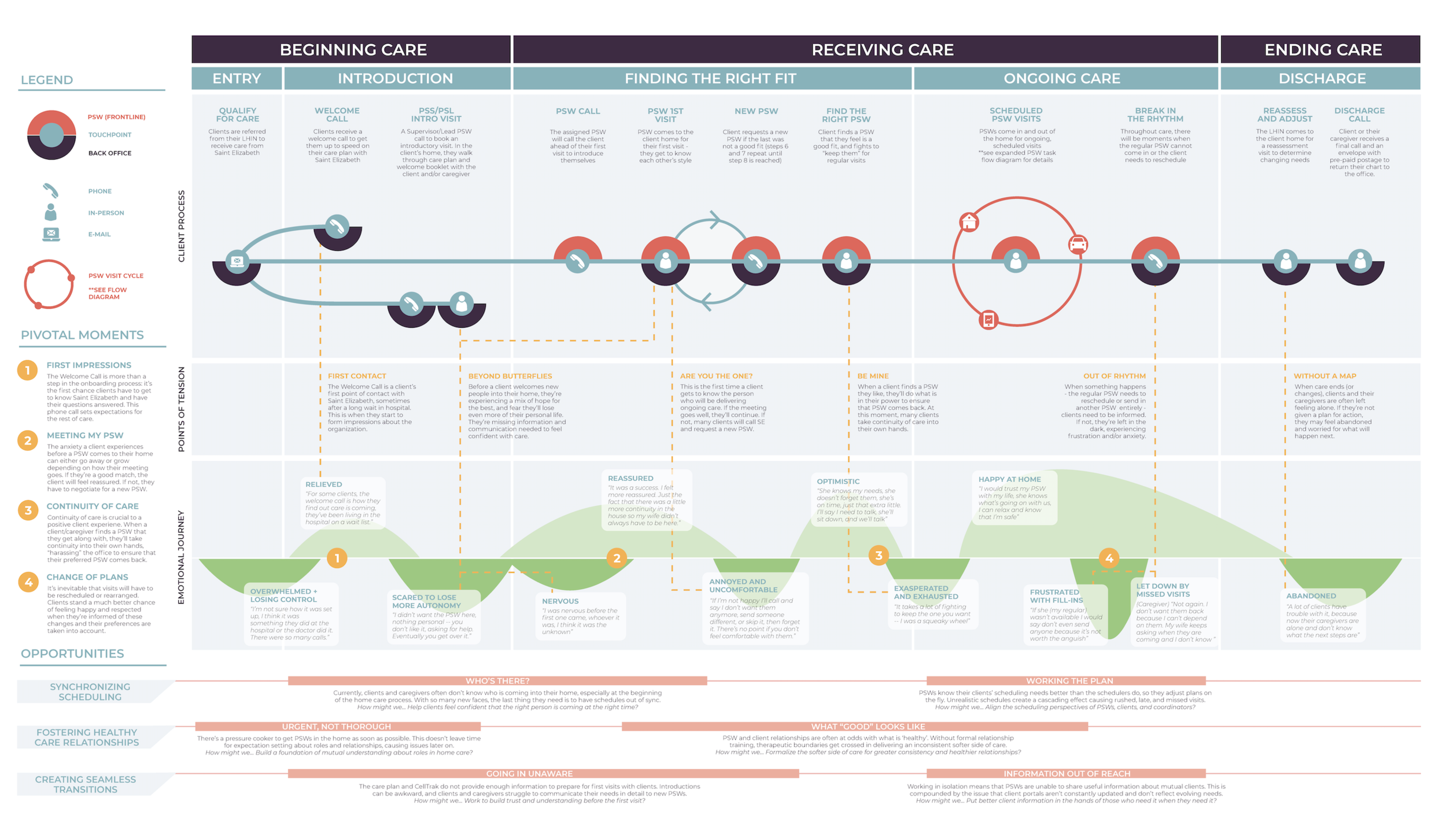
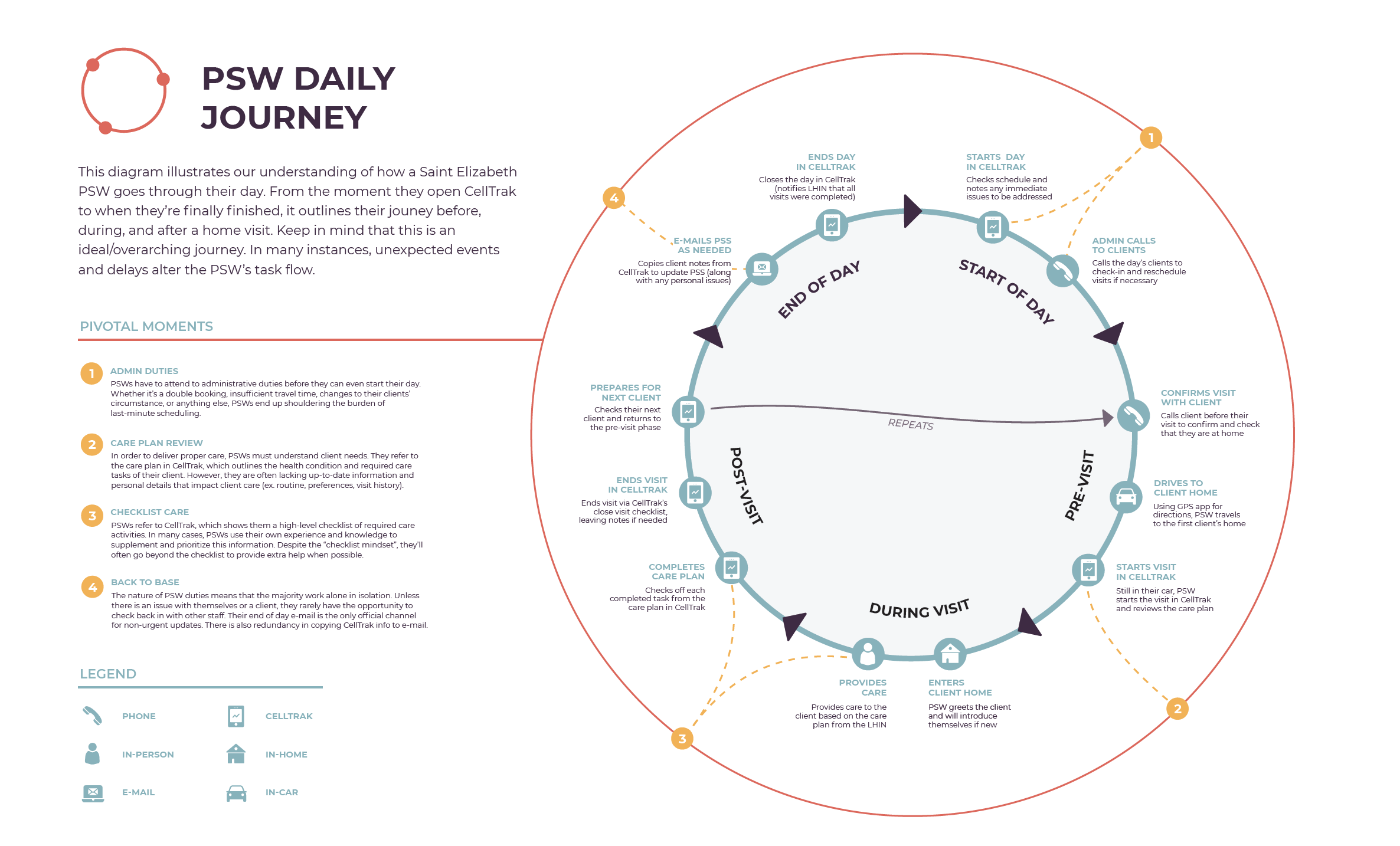
Insights & Opportunity Areas
This research and synthesis translated into five key insights:
Clients seek out opportunities to re-assert agency
No time for PSWs to recharge emotional batteries
Tacit knowledge isn’t being accessed or acted upon
Clients, caregivers, and PSWs are playing broken telephone
Perceptions of “good care” are at odds with therapeutic boundaries
Three opportunity areas were revealed through this process: fostering healthy care relationships, creating seamless transitions and synchronizing scheduling. Stakeholder feedback indicated that scheduling and continuity of care were the greatest areas of need, so efforts were narrowed to those two areas.
Solution Development
Clients typically experience four pivotal points in their home care journey: first impressions, meeting my PSW, continuity of care and change of plans. These along with design principles helped to guide solution development to ensure the concepts were rooted in real needs.
Ideation sessions
Concept Storyboards
Two concepts were storyboarded, displayed on 8x4 ft panels, and brought into a co-creation session with stakeholders ranging from operations managers and tech specialists to PSWs. These provided a starting point for discussion and further ideation.
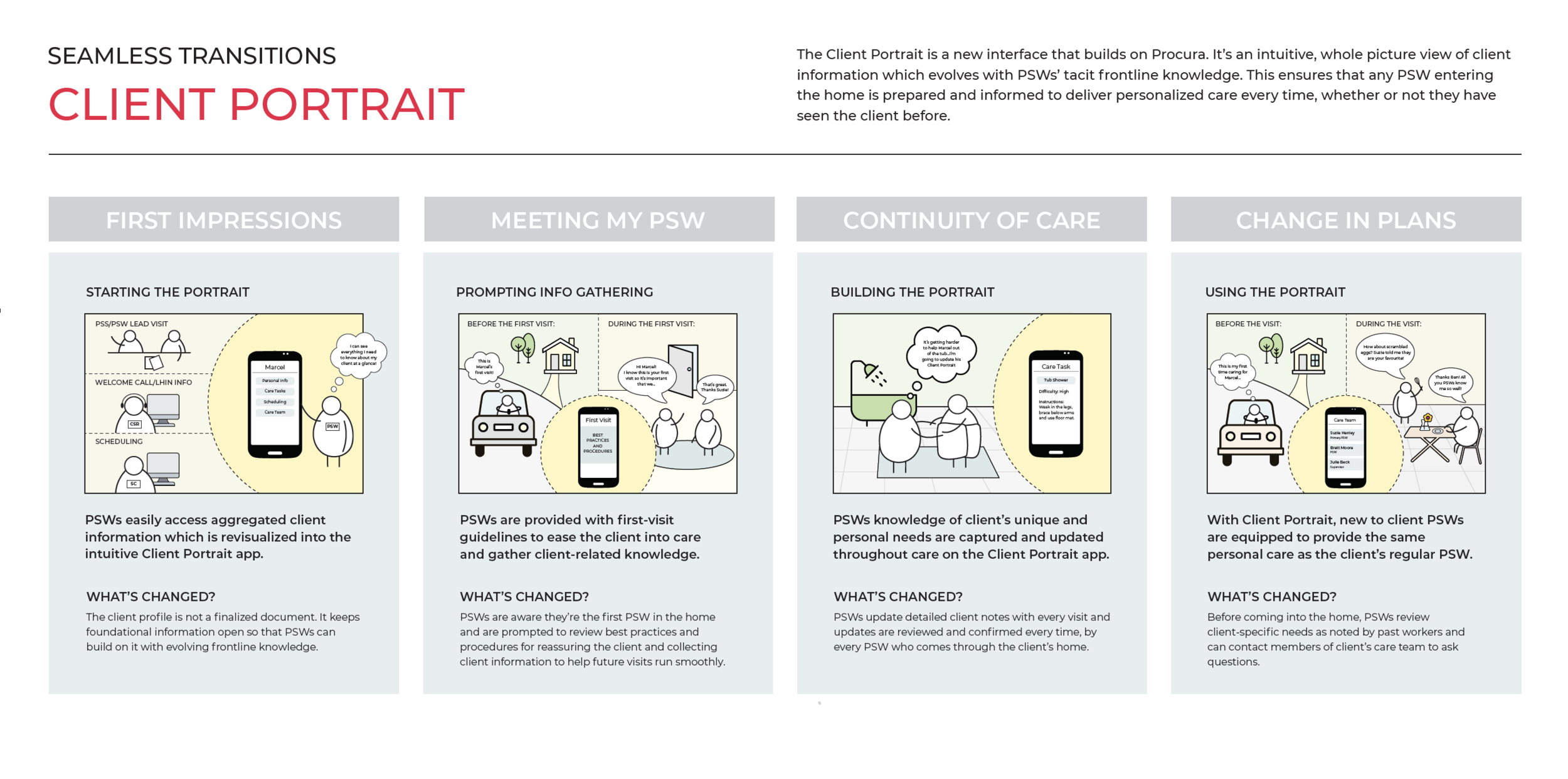

Co-creation Workshop
The half day co-creation workshop yielded invaluable insight and feedback. It prompted stakeholder buy-in and realigned priorities. This contributed to more robust service solution with the development of three components working across the experience.

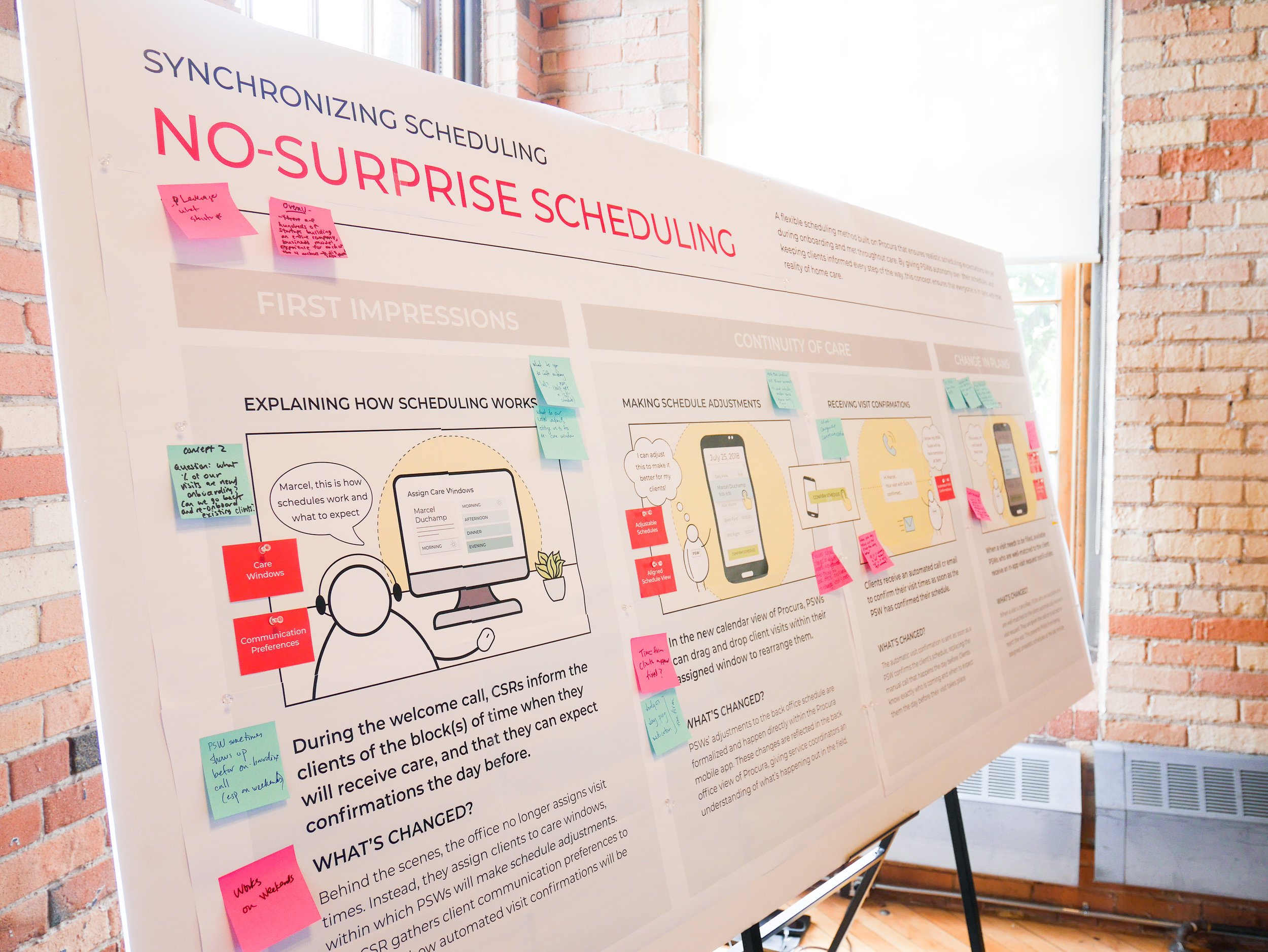

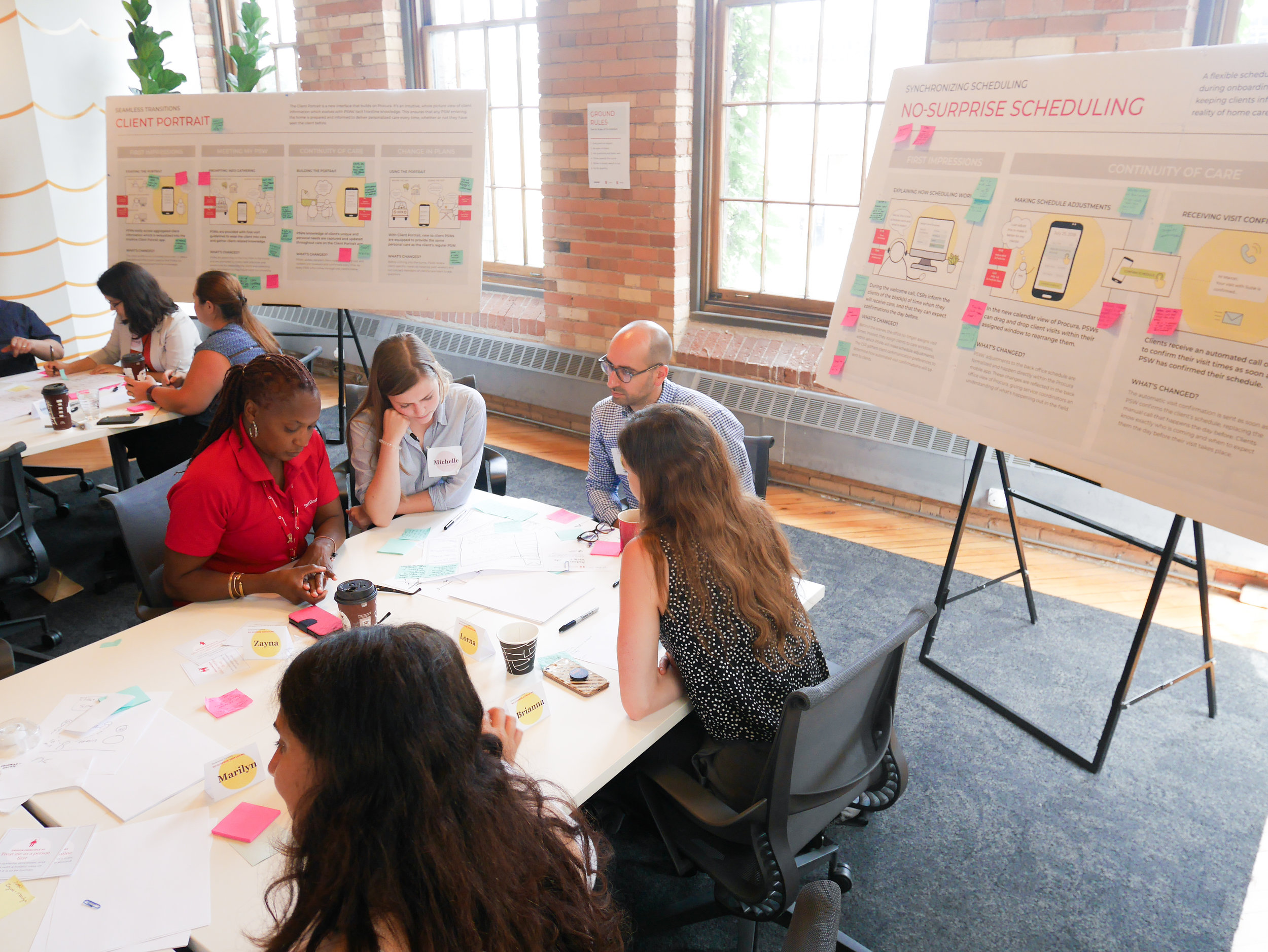
Validation
Refined concepts were tested with clients in their homes and with PSWs on the go. Positive responses and feedback allowed for further refinement.
Outcome
Service Blueprint
The following service blueprint details the final service strategy with a focus on how each prototype relates to the client journey, and which stakeholders use them. It also highlights the interactions between the prototypes and pivotal moments across the client experience.
Medium Fidelity Prototypes
Medium to high fidelity prototypes were produced for each of the service components. This includes digital prototypes such as the on-boarding app, the client portrait and enhanced scheduling app. Additional prototypes include the Care Ambassador employment details, a day in the life and welcome folder. These prototypes are shown in action in the video at the beginning of this page.
Various screens from digital prototypes
Next Steps
Implementation
A comprehensive implementation booklet that describes the research, service strategy and next steps in detail was created to help Saint Elizabeth bring these solutions into reality.
A comprehensive implementation booklet that describes the research, Rhythm, prototypes and next steps in detail










